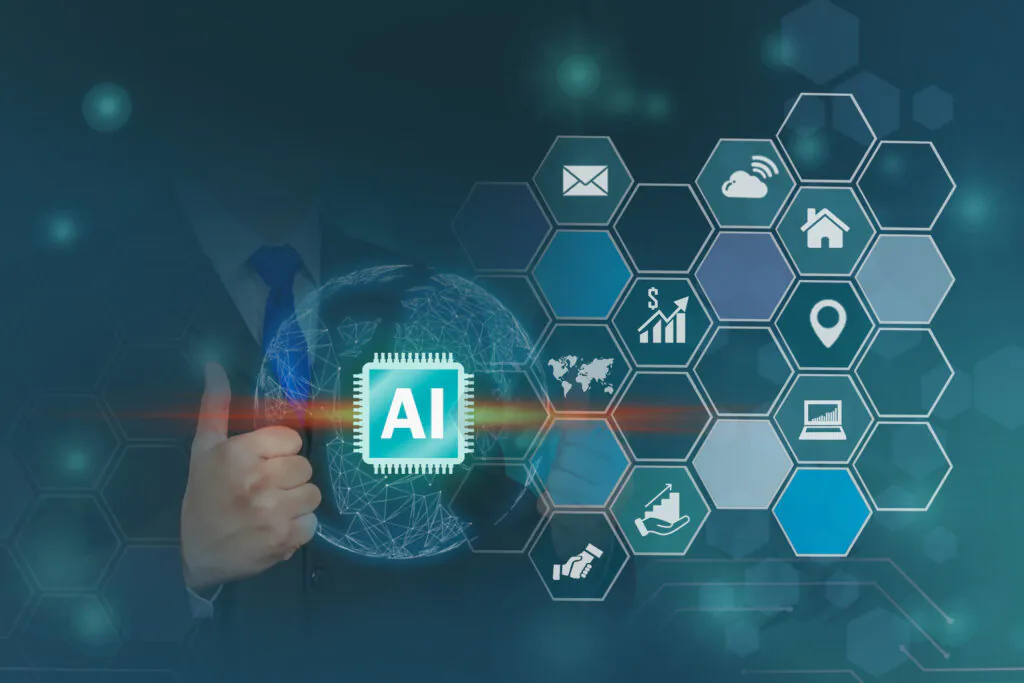In the modern digital ecosystem, businesses are flooded with vast amounts of data, often from multiple sources, applications, and devices. To stay competitive, companies need to efficiently connect, analyze, and utilize this data to gain actionable insights. This is where augmented data integration comes into play, leveraging advanced technologies like Artificial Intelligence (AI) and Machine Learning (ML) to enhance traditional data integration processes. By automating tasks, synchronizing data in real-time, and making smarter decisions, augmented data integration is reshaping the way organizations connect, analyze, and harness business data.
In this blog, we will explore the future of data connectivity powered by AI and augmented data integration, and how businesses can unlock the true potential of their data.
Book a demo to experience the meaningful insights we derive from data through our analytical tools and platform capabilities. Schedule a demo today!
Request a Free DemoTable of Contents
What is Augmented Data Integration?
Augmented data integration refers to the process of combining data from different sources and systems using AI-driven technologies to improve accuracy, efficiency, and scalability. It involves automated, intelligent systems that not only synchronize and integrate data but also provide enhanced insights by predicting trends, recognizing patterns, and offering recommendations.
The Rise of AI-Driven Data Integration
Traditional data integration systems are often manual, time-consuming, and prone to errors. They require human intervention for mapping, transforming, and consolidating data from different sources. AI-powered data integration streamlines this process by automating much of the data transformation and mapping work. Using machine learning algorithms, AI-driven integration systems can learn from past data integration tasks, predict optimal data flows, and reduce human error.
AI-driven data integration ensures:
- Faster data processing
- More accurate results
- Minimal human involvement
- Improved scalability and flexibility
Key Benefits of Augmented Data Integration
The future of seamless data connectivity lies in augmented and AI-powered systems that offer several advantages to businesses:
1. Automated Data Integration
Automated data integration removes the need for manual intervention in data collection, synchronization, and mapping. AI algorithms can automatically detect data sources, format discrepancies, and integrate the data into the desired systems. This results in:
- Reduced integration times
- Lower operational costs
- Minimized manual errors
2. Intelligent Data Integration
With intelligent data integration, systems not only connect and sync data but also analyze it for insights. AI algorithms can identify hidden patterns, optimize data flows, and provide business-critical recommendations. This leads to:
- Smarter decision-making
- Improved data quality
- Enhanced business intelligence
3. Real-Time Data Integration
One of the major advantages of augmented data integration is its ability to offer real-time data integration. As businesses become more dynamic, the ability to access and process data in real-time is critical for timely decision-making. Real-time integration ensures that:
- Data is available immediately for analysis
- Businesses can react faster to changing conditions
- Operational efficiency is improved
4. Cloud-Based Data Integration
Cloud-based data integration is becoming increasingly popular due to its scalability, flexibility, and cost-effectiveness. By integrating cloud-based data storage solutions with augmented integration technologies, businesses can:
- Easily scale operations
- Manage data across different cloud environments
- Ensure seamless access to data anytime, anywhere
5. Data Integration with Machine Learning
Data integration with machine learning (ML) involves using algorithms to analyze large datasets and predict trends or insights that would be difficult for traditional methods to uncover. With machine learning, businesses can:
- Automate data cleansing and enrichment processes
- Forecast future trends
- Improve customer personalization
Key Components of Augmented Data Integration
To implement augmented data integration effectively, businesses rely on several key components:
| Component | Description |
|---|---|
| Data Integration Platforms with AI | Tools that use AI to automate the integration of data from various sources like CRM, ERP, or social media. |
| Data Integration Pipelines | A sequence of steps designed to extract, transform, and load (ETL) data into a target system with minimal human involvement. |
| Hybrid Data Integration Solutions | Solutions that allow for seamless integration between on-premise and cloud-based systems, providing flexibility and scalability. |
| Data Migration with Augmented Integration | Moving data from legacy systems to modern cloud environments with augmented processes that ensure data integrity and compatibility. |
How AI Enhances the Data Integration Process
AI enhances the data integration process by providing the following capabilities:
Data Mapping Automation
AI-powered systems can analyze data from different sources and automatically map data to the correct fields, eliminating the need for manual mapping. This results in:
- Faster and more accurate data integrations
- Reduced complexity and human errors
Predictive Data Modeling
By leveraging machine learning, augmented data integration platforms can predict how data will flow and behave, optimizing the data transfer process for the future.
Advanced Error Detection
AI-driven systems can identify discrepancies and errors in data early in the integration process, providing proactive alerts to data teams and ensuring data quality.
Challenges and Solutions in Augmented Data Integration
While augmented data integration offers numerous benefits, there are challenges to be aware of. Here are some common challenges and their solutions:
| Challenge | Solution |
|---|---|
| Data Security and Privacy Concerns | Implement strong encryption methods and access control protocols in the integration process to ensure data privacy. |
| Data Source Compatibility | Use hybrid and cloud-based data integration solutions to bridge the gap between on-premise and cloud systems. |
| Integration Complexity | Leverage AI to automatically map and integrate data, reducing the complexity involved in multi-source integrations. |
Quantzig’s Augmented Data Integration Services
To stay competitive, organizations need robust strategies to integrate, analyze, and utilize this data seamlessly. Quantzig offers Augmented Data Integration Services powered by AI and ML to streamline this process and unlock the full potential of business data.
Key Features of Quantzig’s Augmented Data Integration Services:
- Automated Data Integration
- Leverage AI to automate data collection, mapping, and synchronization across multiple platforms.
- Reduce operational costs and manual errors with automated workflows.
- Intelligent Data Processing
- Implement machine learning algorithms to identify patterns, optimize data flows, and generate actionable insights.
- Enhance data quality for more accurate and reliable analysis.
- Real-Time Data Synchronization
- Enable dynamic access to real-time data for timely decision-making.
- React quickly to market shifts and operational changes.
- Cloud-Based Integration Solutions
- Offer scalable, flexible cloud integration to manage data across hybrid environments.
- Ensure seamless collaboration and accessibility across global teams.
- Predictive Analytics and Insights
- Use ML to forecast trends, uncover opportunities, and personalize customer interactions.
- Provide advanced error detection to maintain data integrity.
Why Choose Quantzig?
- Expertise in AI-Driven Solutions: With proven experience in implementing AI-powered data integration strategies, Quantzig ensures precision, efficiency, and scalability.
- Customizable Approaches: Tailor integration solutions to meet specific business needs, whether on-premises, cloud-based, or hybrid.
- Actionable Insights: Go beyond integration to derive meaningful insights that drive growth and innovation.
Empower Your Data Journey
Quantzig’s Augmented Data Integration Services position your business to thrive in a data-driven world. From improving operational efficiency to delivering personalized customer experiences, our solutions are designed to meet the challenges of modern data connectivity.
Experience the advantages firsthand by testing a customized complimentary pilot designed to address your specific requirements. Pilot studies are non-committal in nature.
Request a free pilotThe Future of Data Integration
The future of data integration lies in the seamless connection of disparate data sources, combined with the power of AI and automation. AI-driven data integration will become more intelligent, providing deeper insights and predictive analytics, making it possible for businesses to anticipate market changes and adapt quickly.
Moreover, as cloud-based systems, real-time data integration, and machine learning become increasingly prevalent, businesses will have access to more dynamic, adaptable, and secure data environments. With augmented data synchronization, data will be more integrated, faster, and actionable than ever before.
Conclusion
As businesses continue to generate and collect vast amounts of data, the importance of seamless, efficient, and intelligent data integration will only grow. By adopting augmented data integration solutions that combine AI, machine learning, and real-time processing, companies can ensure they stay ahead in an increasingly competitive landscape. From automated data integration to cloud-based solutions, the future of data connectivity is bright and ready to unlock new business insights and opportunities.
Integrating your business data seamlessly with AI-powered tools will empower you to harness its full potential, driving growth, enhancing efficiency, and improving customer experiences. The future of data integration is here, and it’s augmented by the power of AI.
Transform your retail strategy today! Contact Quantzig for a free consultation and take the first step toward a AI-driven future.
Start your free trial



